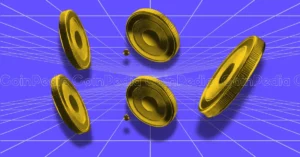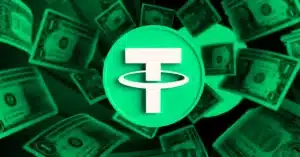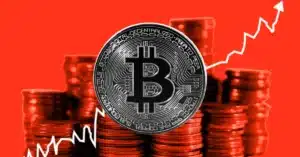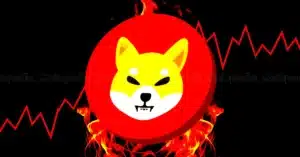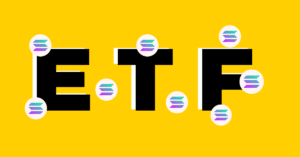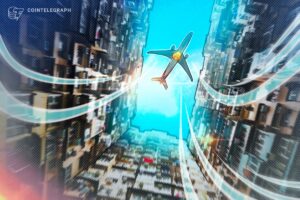What are Generative Art NFTs?

Understanding generative art NFTs
Generative Art NFTs are digital works of art created using algorithms and created as unique tokens on the blockchain.
Generative art, created by autonomous systems, produces unique pieces of art by following programmed rules or instructions. Once created, these artworks are recorded as non-fungible tokens (NFTs) on the blockchain, providing a secure, verifiable record of ownership and authenticity.
The emergence of generative art in the digital age represents a significant shift in the creation and distribution of art. Artists use sophisticated computational processes and programming languages such as Processing, p5.js, and Python that can evolve over time or respond to various external inputs. This approach to artistic creation expands the boundaries of traditional art by introducing elements of randomness, complexity and interaction, allowing for an endless variety of outcomes and making each generation of art truly unique.
The integration of NFTs with art has revolutionized the way digital artworks are authenticated, owned and traded. The use of blockchain technology to extract NFTs has huge implications for artists and collectors, offering a new model for monetizing digital creations and investing in digital art. The secure and transparent nature of blockchain ensures the authenticity of each piece, providing a level of precision and scarcity previously difficult to achieve in the digital realm.
Generative Art How are NFTs created?
Artists use algorithms to create generative art, which is hosted on the blockchain as a unique NFT.
Generative Art NFTs are the result of a symbiotic relationship between art and technology, where the creative process is mediated by computer algorithms. Artists define a set of rules or write a computer program using programming languages. These rules dictate how the visual elements of the artwork are created, including shapes, colors, patterns, and movements.
Additionally, Generative Art NFTs rely heavily on creative coding to produce unique, dynamic works of art. This allows for initial variations as well as the possibility of the artwork evolving based on time or user interaction. They also include arbitrary elements to ensure that each NFT is unique, while also adding metrics to guide the overall aesthetic and ensure it fits their vision. Popular creative coding tools include OpenFrameworks, NodeBox, and Max/MSP.
The final artwork is created as an NFT, a process that turns the digital artwork into a unique asset on the blockchain. This verification process involves the creation of a digital certificate of ownership, which verifies the authenticity and authenticity of the artwork.
A collector buys an NFT; The purchase triggers the smart contract, which executes the generative code on the chain. The code uses randomization based on transaction details or blocking information, creating a truly unique, one-of-a-kind piece of art especially for the collector.
Why are generative art NFTs special?
Generative Art NFTs are distinguished by their algorithm-based creation process, which ensures that each piece is truly one-of-a-kind and flexible.
Generative Art NFTs stand out because of their inherent uniqueness and the dynamic processes behind their creation. Each piece is the result of a complex interplay between algorithms, artist-defined parameters, and sometimes arbitrary elements or real-time data inputs. This ensures that even with the same set of rules, the results can vary significantly, resulting in truly one-of-a-kind works of art.
The lack of digital in art
Digital scarcity is an important concept that can be addressed through blockchain technology. In the context of art, digital reproduction refers to the ability to verify the limited existence, ownership, and provenance of digital assets in a world where it is effortless. Generative art NFTs use this concept to verify and record the uniqueness and ownership of each artwork.
The art of pretending
When art is represented on the blockchain as an NFT, it gets its unique identifier through its metadata, which includes information such as the creator's identity, date of creation, and ownership history. This metadata cannot be altered, ensuring that the integrity and authenticity of the artwork is preserved indefinitely. This authentication process is critical to generative art, as it not only proves the originality of each piece, but also confirms the specific parameters and conditions under which the artwork was created.
Where can Generative Art NFTs be found?
Generative art NFTs are available on a variety of online platforms, from broad marketplaces to niche niches that specialize in generative art.
Generative Art NFTs are accessible through various online platforms that offer digital artworks and blockchain technology. These platforms are excellent sites dedicated to generative and algorithmic art from the wider NFT marketplace.
NFT marketplaces for generative art
NFT marketplaces such as OpenSea, Rarible, Nifty Gateway and SuperRare host a wide range of digital art, including creative art NFTs. These platforms provide a place for artists to create, display and sell their artwork as NFTs.
Collectors can browse extensive collections, participate in auctions, and purchase unique pieces directly from creators. These marketplaces often provide clarity and insight into the artwork's value and authenticity, including community ratings, artist profiles, and a detailed history of each piece, including previous ownership and sale prices.
NFT art creative platforms
In addition to general NFT marketplaces, there are forums dedicated to generative art and the unique creation process. Art Blocks is a popular example, providing a unique space for artists to deploy their creative algorithms.
When a collector purchases a piece on ArtBlocks, the platform's algorithm works to create a unique instance of the artist's work, which is stored as an NFT on the Ethereum blockchain. This ensures that each piece is unique, connecting the work of collection directly to the creative process.

Challenges in generative art NFTs
Innovative NFTs face challenges ranging from intellectual property issues to authentication and ethical considerations.
Navigating intellectual property rights in the digital and creative arts spaces can be particularly difficult. Because generative art is created by algorithms defined by artists, questions arise as to who owns the copyright – the artist, the algorithm, or the end user who interacts with the art to create the final piece. This ambiguity leads to disputes over ownership and copyright infringement, complicating the distribution and sale of digital artworks.
While NFTs inherently provide a means to verify the authenticity and authenticity of digital artworks, the system is foolproof. Issues can also arise from counterfeit NFTs, where individuals create artwork without the original artist's permission, leading to challenges in ensuring buyers are purchasing genuine and original items. The decentralized nature of blockchain technology, while a strength, makes monitoring and control more challenging.
Ethical issues also emerge in the generative art NFT space, particularly regarding the transparency of the art creation process and the potential for algorithmic algorithms to replicate or extract existing artworks without permission or consent. The use of data and AI to create art raises further ethical questions about the origin and authenticity of the art and respect for the intellectual property rights of others. These ethical issues require ongoing discussion and development of best practices within the community.




